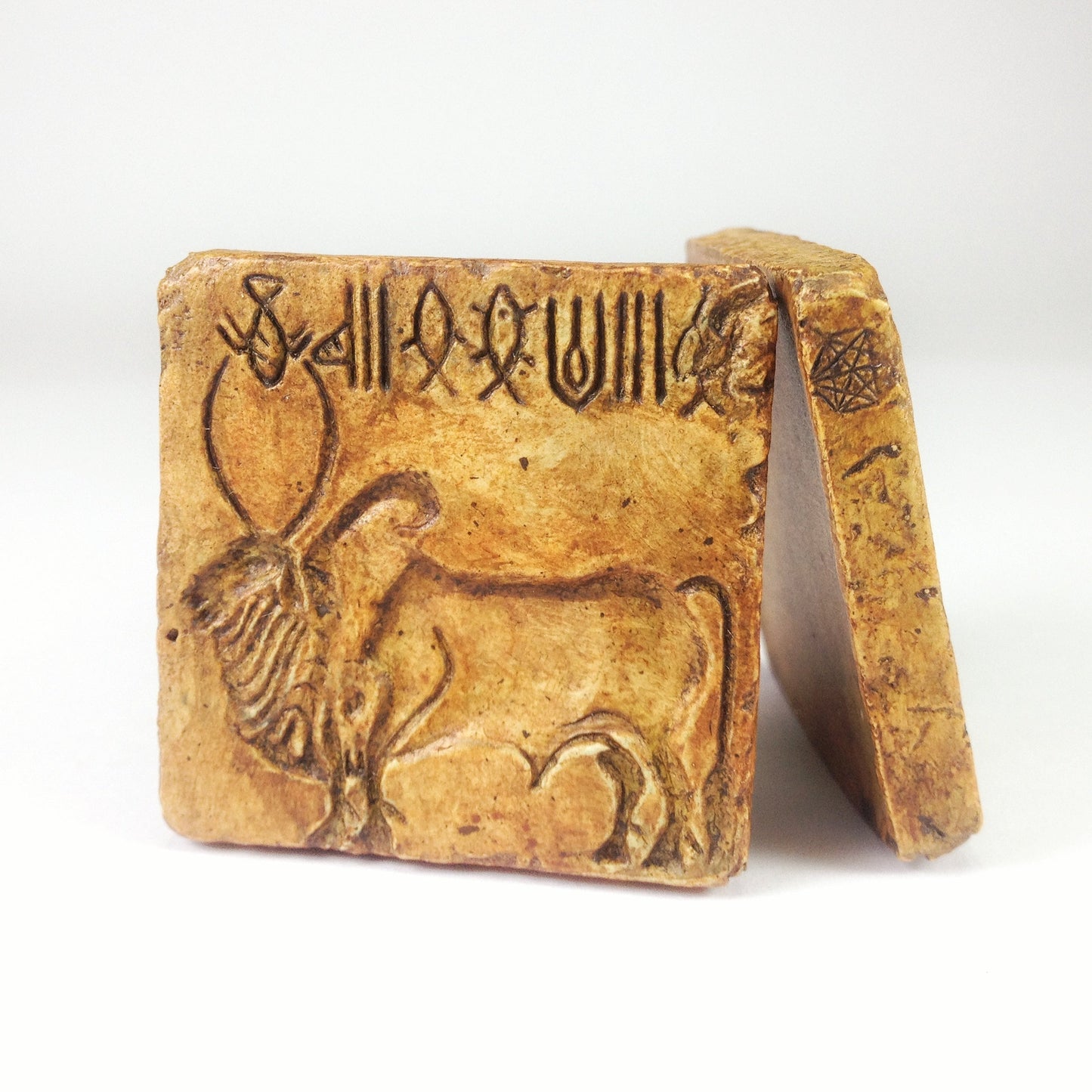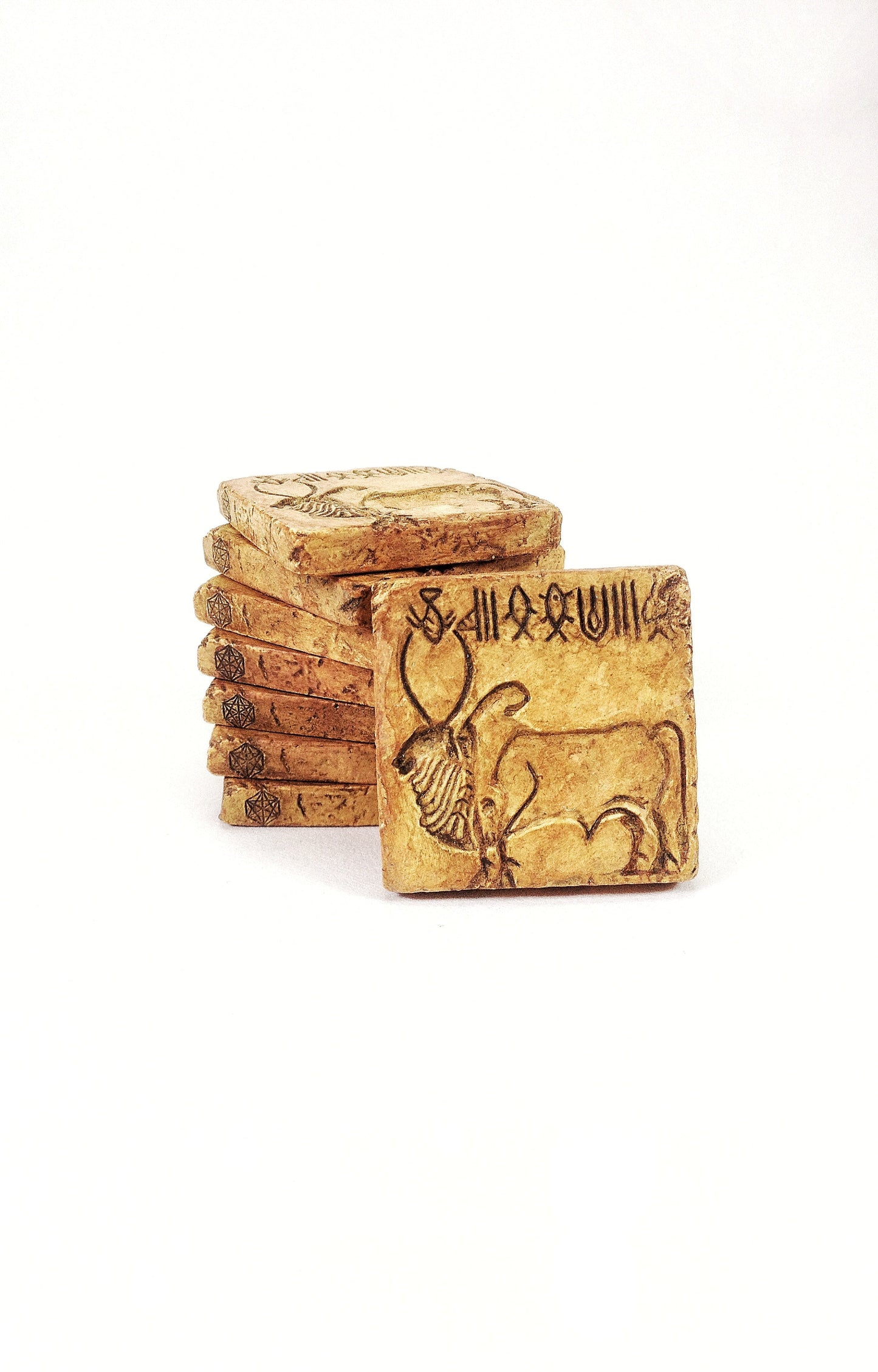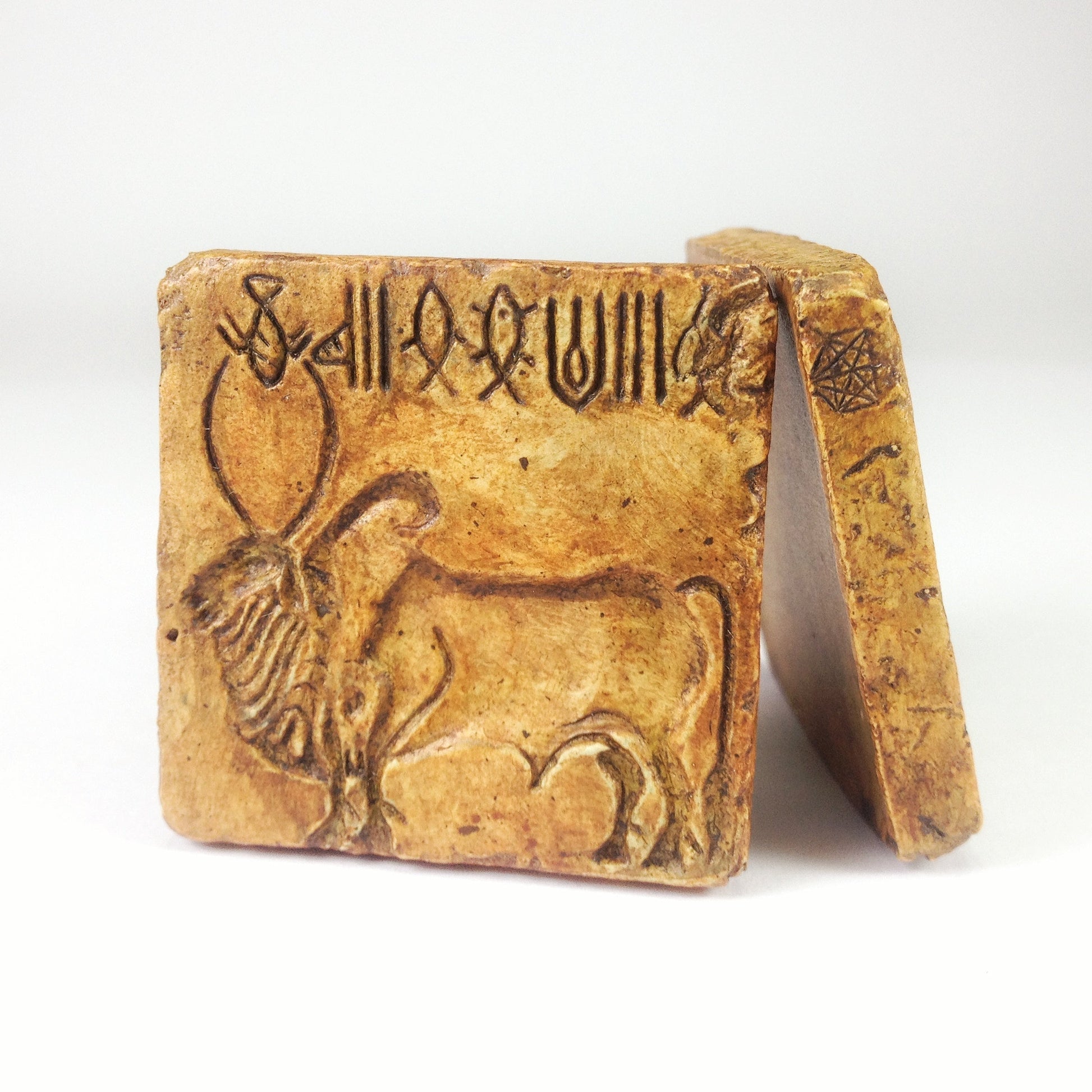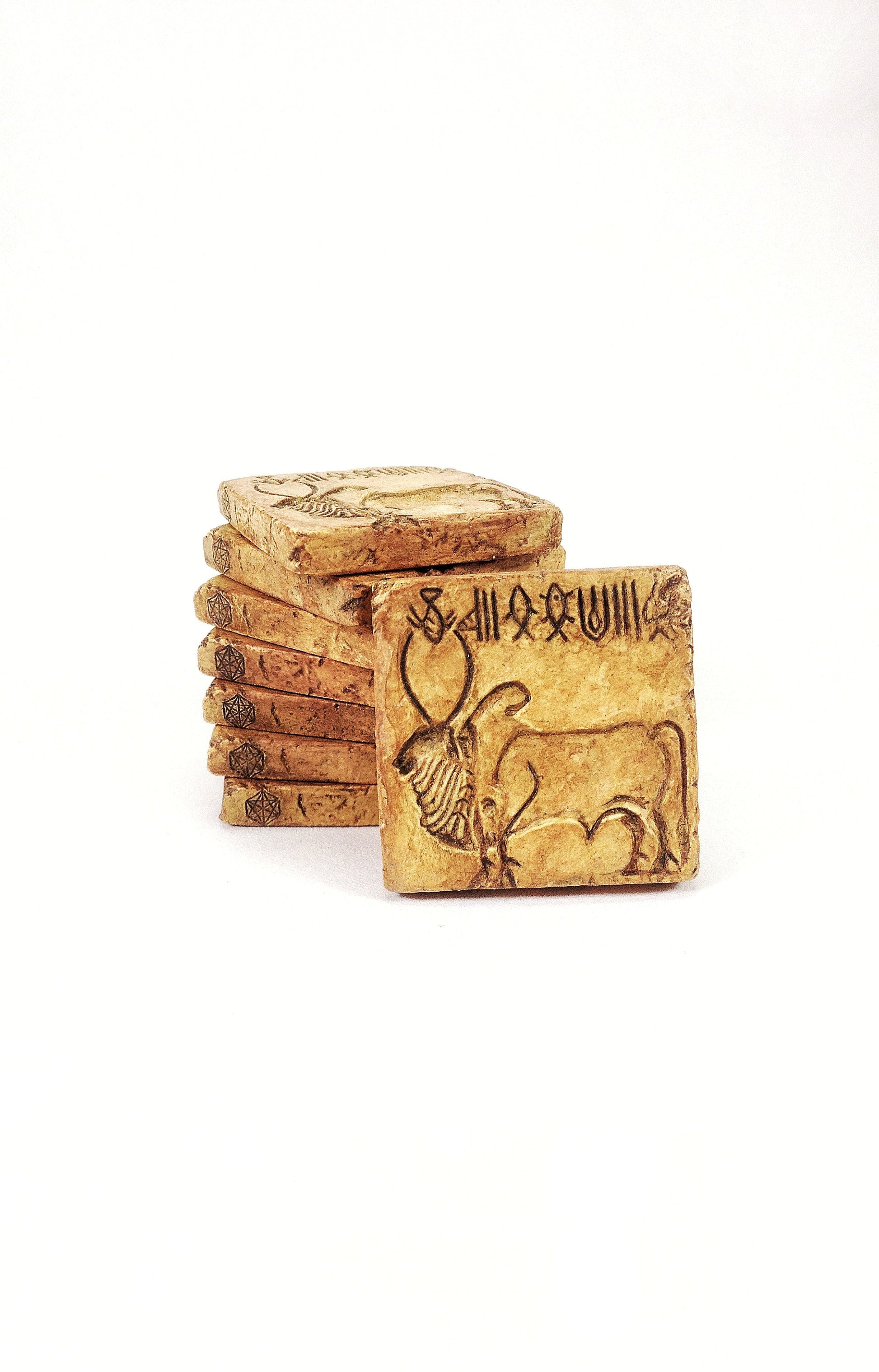MOZAIC GAMES
INDUS VALLEY SEAL 1 Unit
INDUS VALLEY SEAL 1 Unit
Couldn't load pickup availability
Indus Valley Civilisation Seal
Dimensions: 40mm x 40mm x 6mm
Material: Resin
Quantity included: 1 seal tablet
Design is as shown in the picture. Only one design.
Hand-painted Indus First Player Marker
These limited edition hand-painted Indus Seals are resin cast from a hand-sculpted seal. The artist has individually painted these and each one is unique. Use it as a first player marker, a stunning paperweight, or a decorative memento of the Indus civilisation.
History: The Indus Seals
These small objects have been beautifully carved out of stone and then fired to make them more durable. Over 3,500 seals have been found so far. The most typical Indus seal is square, with a set of symbols along the top, an animal in the centre, and one or more symbols at the bottom. Animals found on the seals include rhinoceros, elephants and bulls. On the back is a projection, probably to hold while pressing the seal into other materials such as clay. The projections also have a hole for thread, presumably so the seal can be worn or carried as a necklace.
Early writing?
The symbols at the top of the seal are generally thought to form the script of the Indus Valley language. Similar markings have been found on other objects including pots and what may have been a notice board. These indicate that people wrote the first line from right to left, the second line from left to right, and so on. Around 400 different symbols have been catalogued, but the script has still not been deciphered. The inscriptions on the seals are thought to be related to trading transactions, perhaps indicating the identity of traders, makers or factories.
What might the seals tell us about trade?
The seals were pressed into soft clay to seal the mouths of jars and, as suggested by the imprint of fabric on the back of some seal impressions, were used to create clay tags for sacks of traded goods such as grain. Indus Valley seals have been found as far afield as Mesopotamia (present-day Iraq) in the cities of Umma and Ur, in Central Asia and on the coast of the Arabian Peninsula. A large number of seals have been found at the port of Lothal in western India. Finds of Mesopotamian weights in Indus Valley cities confirm that trading took place between these two civilisations. Some experts believe that Mesopotamian written records of trade in gold, copper and jewellery may be referring to the Indus Valley. It is clear that the Indus civilisation was part of an extensive long-distance trading network.
Share




